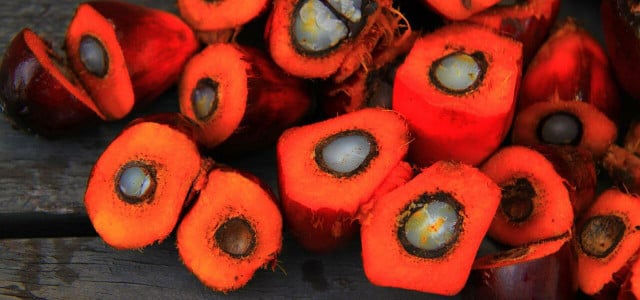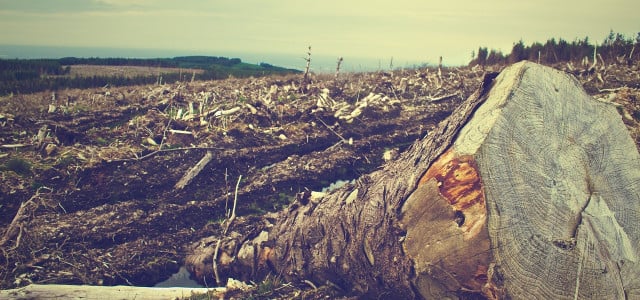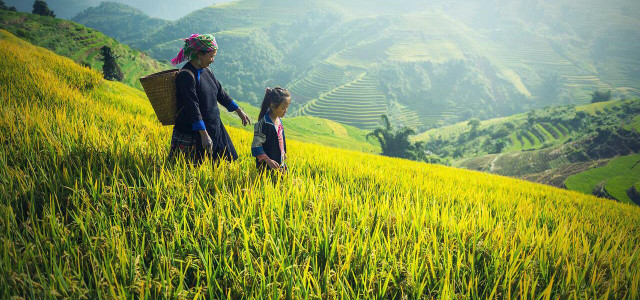Is sustainable palm oil production possible? We’ll look into what palm oil is, how it’s used, and the social and environmental impact that it has.
Palm oil has a bad reputation among friends of the environment and for good reason. As a major driver of deforestation, palm oil production is wreaking havoc on the world’s rainforests. While it may help lift certain populations out of poverty, it comes with a steep cost, including worker exploitation and child labor. But is there a way that palm oil can be produced sustainably? Or would it be better to simply boycott it altogether? To answer these questions, we’ll take a closer look at the current landscape of palm oil production.
What Is Palm Oil and What Is It Used For?
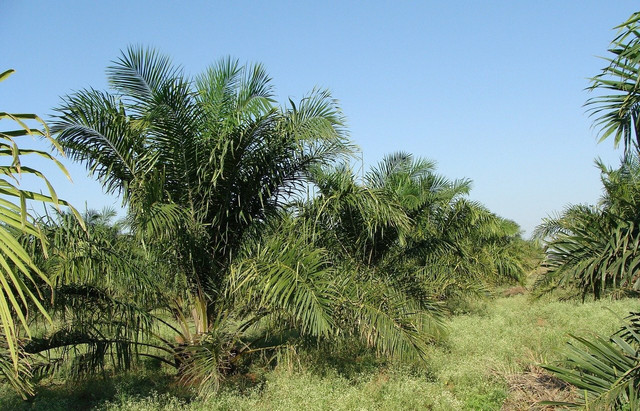
(Foto: CC0 / Pixabay / sarangib)
Palm oil is a vegetable oil that is made from the fruit and the seeds of oil palm trees. Oil palm trees, or Ellis guineensis, are a species of palm native originally to Africa, which grow only within ten degrees of the equator.
There are two main types of palm oil. Crude palm oil is made by crushing the fruit of the palm tree. This variation is lower in saturated fat and is used mostly in food products. The second type, palm kernel oil, is higher in saturated fat and is used mostly for beauty and personal hygiene products.
Although palm oil may not be as familiar to many of us as coconut, soy, or sunflower oil, we consume it in massive amounts. In fact, it is estimated that palm oil is found in over 50% of all packaged food products and 70% of cosmetic and cleaning products. Essentially, this oil can be found in nearly everything. Palm oil uses include:
- Cosmetic and beauty products like lipstick, concealer, eyeshadow, mascara, foundation, and perfume.
- Personal hygiene products like deodorant, skin care products, facial wipes, toothpaste, and sunscreen.
- Food products like ice cream, peanut butter, pizza, bread, chocolate (even vegan chocolate), doughnuts, potato chips, margarine, vegan cheese, and more.
In addition to being present in packaged and processed products of all kinds, palm oil is also used as a raw material for biofuel to power vehicles and produce electricity.
Why Is Palm Oil So Popular?



(Foto: CC0 / Pixabay / Rosy_Photo)
The global demand for palm oil is rising at an alarming rate. According to one study, the global palm oil demand is projected to grow from $62.3 billion in 2021 to $75.7 billion in 2028. But why is this product so wildly popular?
Two reasons. The first is that palm oil possesses many valuable properties.
- It is semi-solid at room temperature, making it ideal for use in things like spreads, conditioners, or moisturizers.
- It also acts as a natural preservative, extending the shelf life of processed food products like pre-prepared meals.
- Palm oil is also particularly stable at high temperatures, perfect for making fried foods like potato chips.
- In the cosmetic industry, high vitamin E content and nourishing fatty acids make palm oil use especially desirable.
- To top it off, palm oil is tasteless and odorless, allowing it to deliver its useful qualities without affecting the flavor or scent of any product.
The second reason that palm oil is so popular is that it is quite simply the most efficient oil crop in the world. Requiring only small areas of land to grow, palm oil is by far the least expensive vegetable oil to produce. For comparison, soybean crops produce 0.4 tons of oil per hectare, and coconut and sunflower crops produce 0.7 tons. Oil palm trees leave the others in the dust, producing a whopping 3.3 tons of oil per hectare. Higher yields mean more stability and more income, as well as (theoretically) less damage to the environment.
What Are the Environmental Impacts of Palm Oil Production?
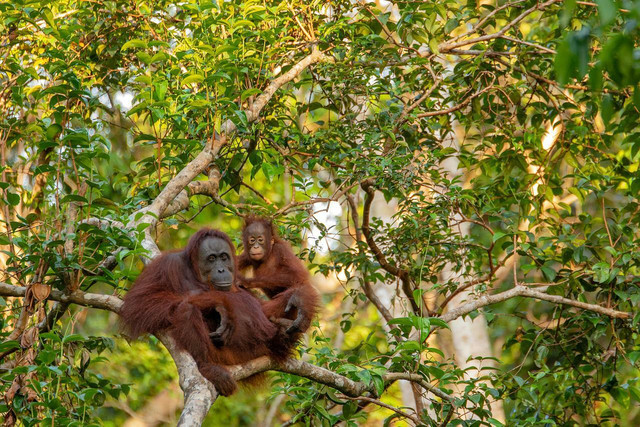


(Foto: CC0 / Pixabay / e-smile)
Since it is the most efficient vegetable oil to produce, one might automatically assume that palm oil is also the most sustainable. Unfortunately, this is not so. Why?
Palm oil production is a major driver of deforestation. Today, palm oil is produced mostly in Indonesia and Malaysia, but as demand grows, plantations are spreading rapidly throughout Asia, Africa, and Latin America. To make way for those plantations, hundreds of miles of primary forest (areas that have never been touched by humans and/or are especially biodiverse) are systematically destroyed. According to a 2018 Greenpeace study, palm oil suppliers cleared 500 hectares of rainforest in Southeast Asia between 2015 and 2018 alone. To make things worse, the forests are often cleared using fires, adding extra pollution on top of the already lost atmosphere-purifying effects of the trees.
The fact that new oil palm plantations are often planted on peatland causes the sustainability score of palm oil production to sink even further. Peatlands contain 15-30% of the world’s carbon stores. The plants in healthy peatland absorb CO2 from the atmosphere through photosynthesis, storing it as carbon. When peatlands are disrupted, that carbon comes into contact with the oxygen in the air and is released as carbon dioxide. Wetland International estimates that two billion tons of CO2 are emitted each year due to peatland degradation.
The story doesn’t get any better from there. The expansion of palm oil plantations is not only responsible for the destruction of some of the world’s most biodiverse flora but also for the further endangerment of some of its already critically-endangered fauna. The WWF lists pygmy elephants, Sumatran rhinos, and Sumatran tigers, among others, as threatened as a direct result of the high demand for this crop. The Orangutan Foundation International estimates that between 1000 and 1500 orangutans are killed each year because of palm oil plantations.
Finally, the use of palm oil to make biofuel also contributes negatively to the environment. Despite the fact that the EU has labeled the use of palm oil for energy as unsustainable, the majority of palm oil imported into the EU is still used for energy, and the trend is getting worse. In the US, there is also much debate about how environmentally friendly certain biofuels really are. For example, one report shows that the additional emissions caused as a result of growing the raw materials for biofuels like palm oil is more than the amount saved by the reduced burning of fossil fuels.
What Are the Social Impacts of Palm Oil Production?
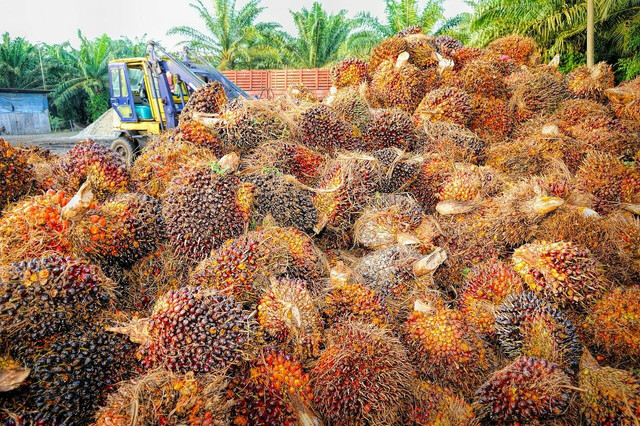


(Foto: CC0 / Pixabay / tristantan)
Palm oil production has a profoundly negative environmental impact, but its social impact is a bit more complicated.
The development of new oil palm plantations often results in the displacement of local communities, pushing out indigenous people from their ancestral land. Workers on such plantations often labor under extremely harsh conditions for very little pay. Amnesty International reports long hours with unrealistically high targets, harsh penalties for mistakes (like not picking up palm fruits lying on the ground), exposure to toxic chemicals, and employment of children as young as eight.
Despite these unacceptable conditions, millions of people depend on palm oil production to make a living. Smallholders operate in some of the poorest areas of the world, including parts of Africa and South America, and its production supports 4.5 million people in Indonesia and Malaysia alone.
Can Palm Oil Be Sustainable?
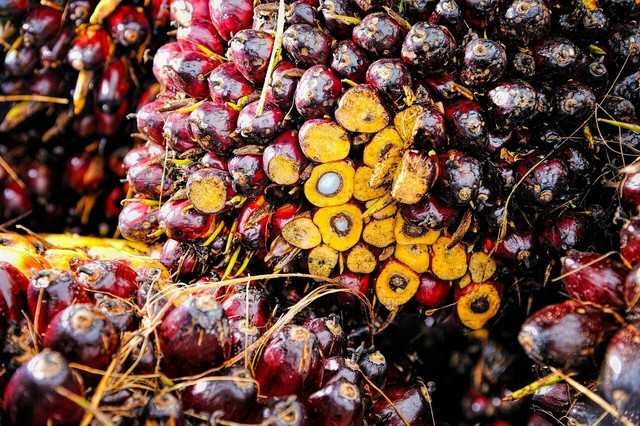


(Foto: CC0 / Pixabay / tristantan)
In theory, palm oil can be sustainable. In practice, it is not so easy. Some organizations are — at least in theory — working to improve conditions and create reliable certification programs.
Perhaps the most well-known of these foundations is the Roundtable on Sustainable Palm Oil. The RSPO is a nonprofit whose stated aims are to bring together oil palm producers, processors, consumer good manufacturers, retailers, banks and investors, and environmental and social NGOs to maintain global standards for sustainable palm oil. In order to receive an RSPO seal, companies must commit to the following principles and criteria:
Principles:
- Behave ethically and transparently.
- Operate legally and respect rights.
- Optimize productivity, efficiency, positivity impacts, and resilience.
- Respect community and human rights and deliver benefits.
- Support smallholder inclusion.
- Respect workers’ rights and conditions.
- Protect, conserve, and enhance ecosystems and the environment.
Production criteria:
- No deforestation.
- No new planting on peat.
- No use of fire.
- Protection of labor and human rights.
- Decent living wage.
The RSPO also aims to provide support to smallholders in the form of a training academy, administrative assistance and financial support to become certified, and an engagement platform. Currently, 19 percent of all palm oil produced globally is certified by the RSPO.
Such efforts sound promising, but there are many critical voices. The Rainforest Action Network, for example, has called the RSPO a greenwashing tool. They argue that despite its strict policies on paper, the RSPO does not strongly enforce any of the stated standards, allowing companies to hide behind the certification. This criticism came as a result of a report by Amnesty International, which investigated three RSPO-certified palm growers in Indonesia and found dismal working conditions, corruption, and child labor.
This, in addition to the fact that there is no legal definition or regulation surrounding the term “cruelty-free”, leaves more than enough room to question the reliability of such certification programs.
What Can I Do To Help?



(Foto: CC0 / Pixabay / paulbr75)
Palm oil is associated with many bad practices, so unless you are willing to really do your homework about the exact sourcing processes of specific companies that you buy products from, it is probably best to avoid it altogether.
However, there are other ways to make a difference. The best way to promote positive change and help smallholders in the palm oil industry is to do as much as possible to help encourage increased palm oil sustainability. Here are some things that you can do:
- Take action: Find and support smaller organizations and non-profits online or in your community who are taking constructive action against unethical and unsustainable palm oil production. For example, Forever Sabah, the Rainforest Action Network, and Rainforest Rescue are great places to start.
- Buy only certified products: Although RSPO certification is far from perfect, it is a start. The program is backed by the WWF and the Rainforest Alliance, and it represents a strong signal to companies and policy-makers that the environment and ethical treatment of workers are important to consumers. You can find a list of RSPO-certified products here. You can also check the WWF’s palm oil sustainability scorecard to see how different companies measure up. In the future, keep an eye out for new certification companies other than the RSPO and be sure to support them in order to increase competition and accountability.
- If not certified, not at all: Be conscious of what you purchase. If you can’t find certified cruelty-free products that contain palm oil, buy things that don’t contain any at all. You can find a list of palm-oil-free brands here. And remember, palm oil can be called many things. If you see any of the following on a product label, it is not palm oil-free: ethyl palmitate, glyceryl stearate, hydrogenated palm glycerides, palmitate, sodium lauryl/laureth sulfate, or stearic acid.
Read more:
- Slash-and-Burn Agriculture: Definition, Risks, and More
- Forest Conservation: Definition & 7 Impactful Methods
- Environmental Stewardship: Definition and Examples
Do you like this post?






